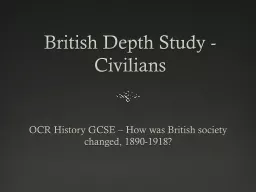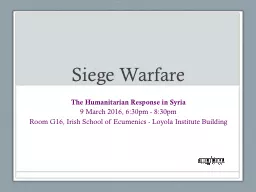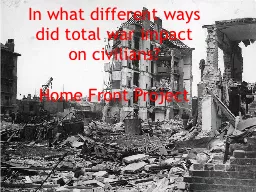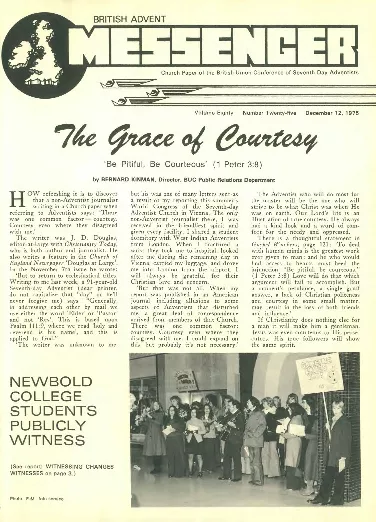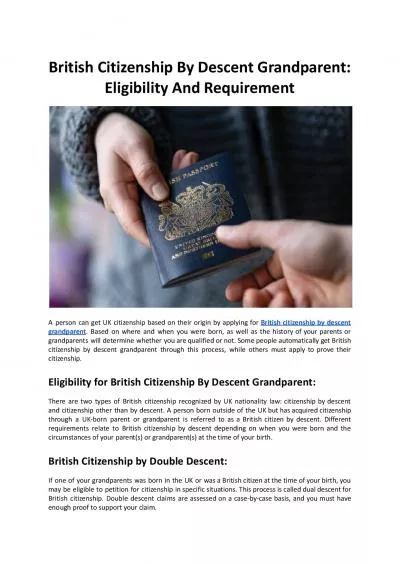PPT-British Depth Study - Civilians
Author : karlyn-bohler | Published Date : 2016-09-16
OCR History GCSE How was British society changed 18901918 Outbreak of War The First World War started in August 1914 The public mood was very positive people expected
Presentation Embed Code
Download Presentation
Download Presentation The PPT/PDF document "British Depth Study - Civilians" is the property of its rightful owner. Permission is granted to download and print the materials on this website for personal, non-commercial use only, and to display it on your personal computer provided you do not modify the materials and that you retain all copyright notices contained in the materials. By downloading content from our website, you accept the terms of this agreement.
British Depth Study - Civilians: Transcript
Download Rules Of Document
"British Depth Study - Civilians"The content belongs to its owner. You may download and print it for personal use, without modification, and keep all copyright notices. By downloading, you agree to these terms.
Related Documents

